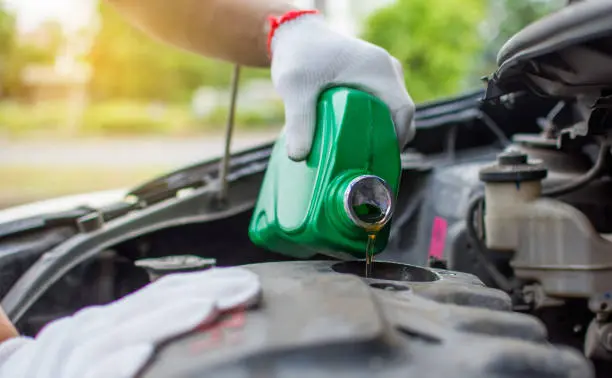Regular oil changes are one of the most important things you can do to keep your car’s engine healthy. Yet, many drivers aren’t sure how often this is necessary. The truth is, there’s no single answer—it depends on your driving habits, vehicle type, and oil quality. Following a consistent maintenance schedule and knowing when to get an oil change can save you money, improve performance, and extend the life of your vehicle.
Why Oil Changes Are So Important
Engine oil is vital for smooth operation, lubricating moving parts, reducing friction, and regulating temperature. Over time, oil degrades, becoming contaminated with dirt and metal particles, losing its protective qualities. This leads to faster wear, increased engine heat, and potential costly damage. Regular oil changes ensure the engine remains clean, well-lubricated, and efficient. This simple maintenance step prevents breakdowns and maintains fuel efficiency.
General Guidelines for Oil Changes
Experts once recommended changing your oil every 3,000 miles, but advancements in engine and oil technology have extended this interval for many vehicles. Depending on your car’s make and model, you may be able to go 5,000, 7,500, or even 10,000 miles between oil changes. To determine the best schedule for your vehicle, consult your owner’s manual for the manufacturer’s recommendation. Also, consider factors like your driving habits and environment, as these can impact how quickly your oil degrades. For example, extreme weather conditions, from hot summers to freezing winters, can affect oil performance. Regular oil changes are essential to keep your engine running smoothly year-round.
Factors That Affect Oil Change Frequency
Several conditions influence how often you should replace your oil.
1. Driving Habits
If you frequently make short trips, drive in stop-and-go traffic, or idle for long periods, your engine rarely reaches its optimal temperature. This causes the oil to break down faster because it can’t fully circulate or burn off moisture. In contrast, consistent highway driving is less demanding on your engine, allowing the oil to last longer. Understanding your driving habits will help you create the right maintenance schedule.
2. Type of Oil Used
The type of oil you use affects how often it needs changing. Conventional oil requires more frequent changes, while synthetic oil provides better performance and lasts longer. Synthetic oil resists heat and breakdown, making it ideal for extended intervals between changes. However, regular maintenance is still essential to keep your engine in top shape.
3. Vehicle Age and Condition
Older cars or high-mileage vehicles often need more frequent oil changes due to looser engine tolerances and faster oil consumption. Newer models are designed to go longer between changes. For cars over 10 years old or with 100,000+ miles, frequent service helps prevent mechanical wear.
4. Climate and Environment
Weather also impacts oil life. Extreme temperatures, from cold winters to hot summers, affect oil performance. Cold thickens oil, hindering circulation at startup, while heat thins it, reducing protection. Regular oil changes counter these effects, ensuring efficient engine operation year-round.
Signs It’s Time for an Oil Change
Even if you haven’t reached your mileage limit, your car may still need fresh oil sooner. Watch for these common signs that it’s time for a change:
- Dashboard warning light – The oil or check engine light turns on.
- Dark or dirty oil – Oil that appears thick, dark brown, or gritty when checked with the dipstick.
- Engine noise – Knocking, grinding, or ticking sounds can indicate low or poor-quality oil.
- Decreased performance – Rough idling or slower acceleration may result from degraded oil.
- Exhaust smoke – Blue or gray smoke can be a sign of burning oil or other engine problems.
If you notice any of these symptoms, it’s best to schedule an oil change right away to avoid further damage.
Benefits of Staying Consistent with Oil Changes
Regular oil changes offer benefits beyond just preventing engine wear. They help your vehicle run cleaner, smoother, and more efficiently. Proper lubrication reduces internal friction, enhancing overall performance and fuel economy. Consistent maintenance also increases your car’s resale value, as buyers prefer vehicles with documented service records. Given varying road conditions, routine oil changes are essential for keeping your car dependable year-round.
Conclusion
Regular oil changes are one of the simplest yet most effective ways to protect your vehicle’s engine. While modern cars can go longer between oil changes, factors like driving habits, weather, and oil type still influence how often service is needed. Staying on schedule for your oil change in Provo, Utah, ensures your car runs efficiently, lasts longer, and avoids costly repairs. For drivers, consistent oil maintenance is crucial for a reliable vehicle, ready for any journey.
Also Read- How Niche Edits Are Changing the Landscape of Modern Link Building







